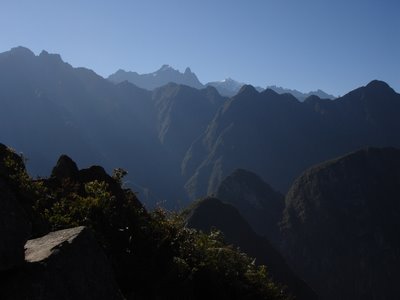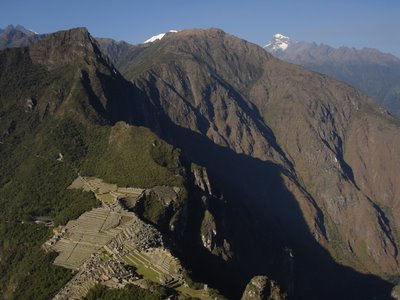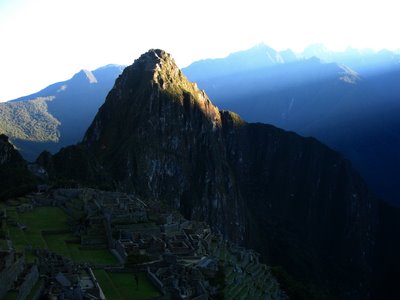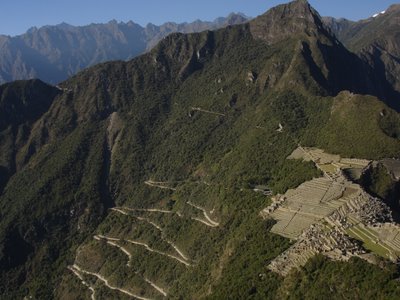



I had another day here in Aguas Calientes and Machu Picchu. To avoid feeling like cow lost in the herd I decided to wake up early and start hiking from Aguas Calientes to Machu Picchu at 4:00 am instead of taking the bus. The bus ride from Aguas Calientes to Machu Picchu takes about 20 minutes meandering through numberous switchbacks. The hike in the morning was spectacular, I wasn't alone though, which isn't surprising given the number of humans tromping through this area. As I approached the entrance to Machu Picchu the sun crested over the ridgetops its rays shining onto the ruins of Machu Picchu (MP). Aguas Calinetes is at 6561 feet much lower than Cusco (12,000 feet), making the hiking and breathing easy, it only took 50 minutes to reach Machu Picchu. Once at the top I decided to hike up Huayna Picchu at the back of the ruins. Huayna Picchu translates as 'young peak,' but 'picchu' with the correct pronunciation, refers to the wad in the cheek of a coca-chewer.
Some basic facts on Machu Picchu:
Machu Picchu is probably the most familiar symbol of the Inca Empire. Since 1983 the site has been designated as a UNESCO World Heritage Site, and has been the subject of concern about damage caused by tourism. It is thought that the city was built by the Sapa Inca Pachacuti, starting in about 1440, and was inhabited until the Spanish conquest of Peru in 1532. Archaeological evidence (together with recent work on early colonial documents) shows that Machu Picchu was not a conventional city, but a country retreat town for Inca nobility (similar to the Roman villas). The site has a large palace and temples to Inca deities around a courtyard, with other buildings for support staff. It is estimated that a maximum of only about 750 people resided in Machu Picchu at any one time, and probably only a small fraction of that number lived in the town during the rainy season and when none of the nobility were visiting. It is thought that the site was chosen for its unique location and geological features. It is said that the silhouette of the mountain range behind Machu Picchu represents the face of the Inca looking upward towards the sky, with the largest peak, Huayna Picchu (meaning Young Peak), representing his nose. The peak is also known as the "hitching post of the sun." In 1913, the site received significant publicity after the National Geographic Society devoted their entire April 1913 issue to Machu Picchu.
No comments:
Post a Comment